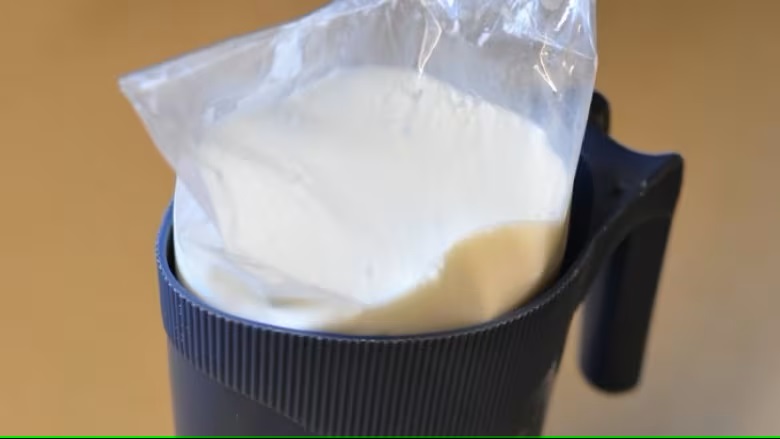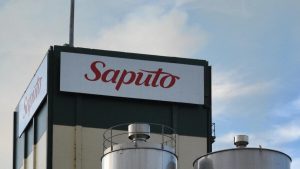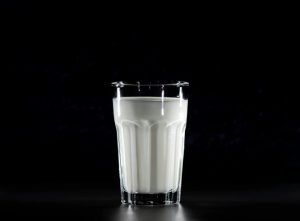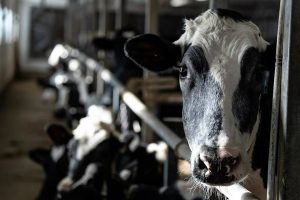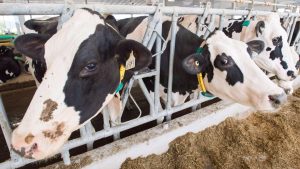
Milk in bags, a peculiar piece of Eastern Canadian culture. But are they going by the wayside, and would we care?
It’s a question that prompted discussion when, earlier this month an article in Quebec-based LaPresse proposed that bagged milk could someday be a thing of the past.
“What would that mean for our identity?” asked food writer Corey Mintz in TVO’s opinion section last week. “Quebec has the French language. The East Coast has seafood. Who are Ontarians if our milk doesn’t come in bags?”
One expert thinks it could be on its way out — but a major brand says they have no plans to ditch the ubiquitous dairy pouches.
AgroPur, the dairy company that owns both Sealtest and Natrel, brands that sell milk in 4 litre bags, says it’s one of their most popular products.
“The four-litre format is the most popular in Ontario, it’s also where we have the lowest margin,” said Mylene Dupere, vice-president of communications with AgroPur.
Bagged milk sales account for 80 per cent of milk sales in Ontario. When you remove the company’s more premium milk offerings, that number rises to 92 per cent.
“It is actually the lowest price for milk compared to other formats, like the two litre format,” Dupere said.
Dupere says they’ve had no discussions about halting the sale of milk in bags, and sales are holding steady.
The Dairy Farmers of Ontario declined to comment, while the Ontario Dairy Council and Saputo, owner of the Neilson dairy brand, did not respond to requests for comment.
Sylvain Charlebois, a food researcher at Dalhousie University— and a voice who chimed into the bagged milk discussion on X, the platform formerly known as Twitter — says he expects bagged milk to go by the wayside in 10 years.

“The market in Ontario relies on people who actually need to buy four litres of milk,” Charlebois said. “Who are they? Big households. People who drink a lot of milk. And there are few and fewer of them.”
Charlebois cited factors including declining dairy consumption and declining family sizes, as well as the proliferation of dairy alternatives as reasons it might not always make sense to sell large-format bagged milk.
But bagged milk does have its pros, he said: It’s cheap in Ontario, where purchasing the larger size is a better deal than purchasing the same amount in smaller cartons. That’s not the case in neighbouring Quebec, which regulates the price.
He also noted the accessibility factor of not having to lift a large carton, important for kids and people with disabilities.
“That’s why you’re able to sell that format at a very, very low price point. And so the economics of bagged milk are pretty strong for the industry for sure,” Charlebois said, noting the adaptations society took on, like bagged milk pitchers, when bagged milk became popular.
“Logistically, we figured it out.”
Canada’s Food Guide also changed about five years ago, Charlebois said, and water — not milk — is the drink of choice for the guide. He says he believes that means a generation of kids who will be less inclined to buy milk as they grow up.
One Canadian family built a business on one of the inconveniences of bagged milk.
Kevin Ostrovsky is the president of Tangibles, a Toronto-based company that makes the Snippit: The small plastic device with a tiny blade, commonly found in grocery store aisles, meant to cut the corner off a bag of milk.
Ubiquitous grocery store ‘Snippit’ born of father’s bad dream
Ostrovsky says the Snippit was born when his dad, an engineer, had a dream that baby Kevin cut his finger from some scissors used to cut open the milk bag, back in the 1970s when bagged milk was still new on the market.
“He woke up a little shaken and got started working on the solution to how to open up the plastic milk bags without the use of scissors,” Ostrovsky said. “I still have all my fingers.”
His dad designed the tool, comparing the tool to the size of his infant son’s hands to ensure the opening would be too small to slice even the tiniest fingers. They began fabricating the tools first with a machine at home, then in a Toronto-area factory where it, and other products, are still made by the family today, Ostrovsky says.
The Snippit is found in Sobeys and Bed Bath and Beyond stores, but today much of the company’s business is commercial and industrial, with different versions of the tool used in restaurants and in shipping.
But Ostrovsky said they also get plenty of emails from people telling them about other uses for the small tool including, most surprisingly, in fishing.
“We use bag milk all the time. I mean, I’ve got two small children, two young boys and …we go through milk pretty quickly.”
You can now read the most important #news on #eDairyNews #Whatsapp channels!!!
🇺🇸 eDairy News INGLÊS: https://whatsapp.com/channel/0029VaKsjzGDTkJyIN6hcP1K
